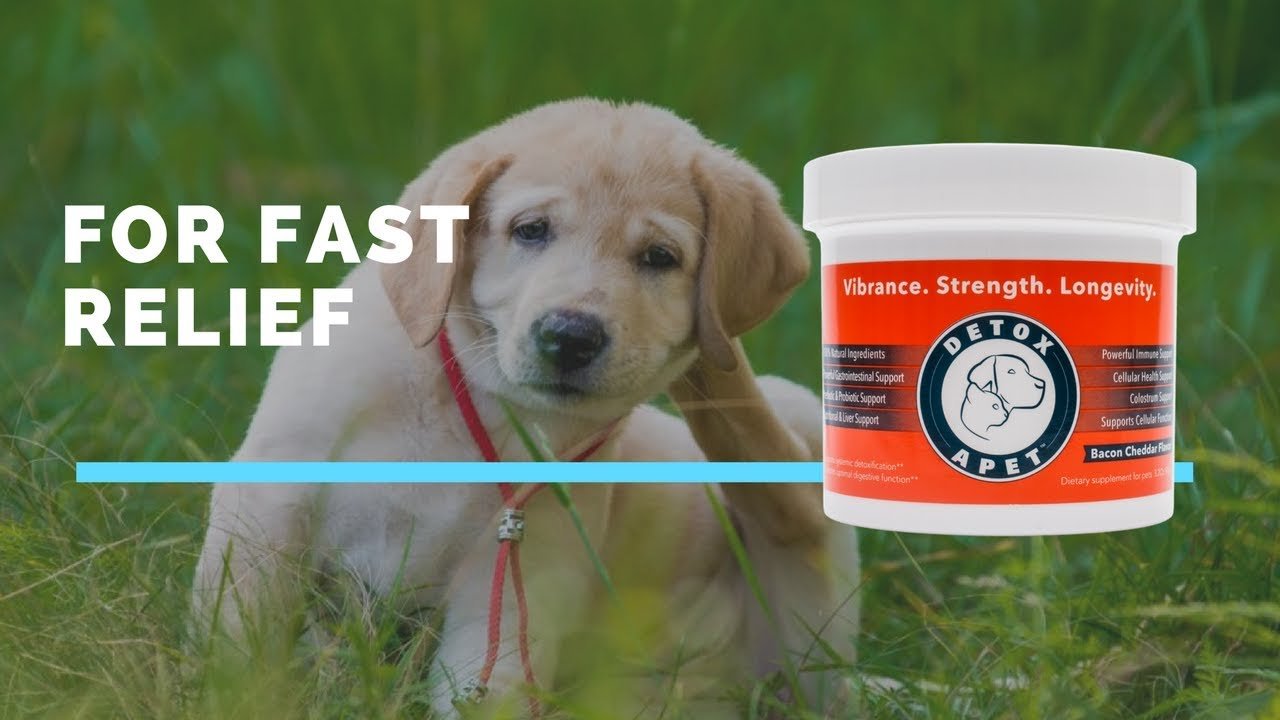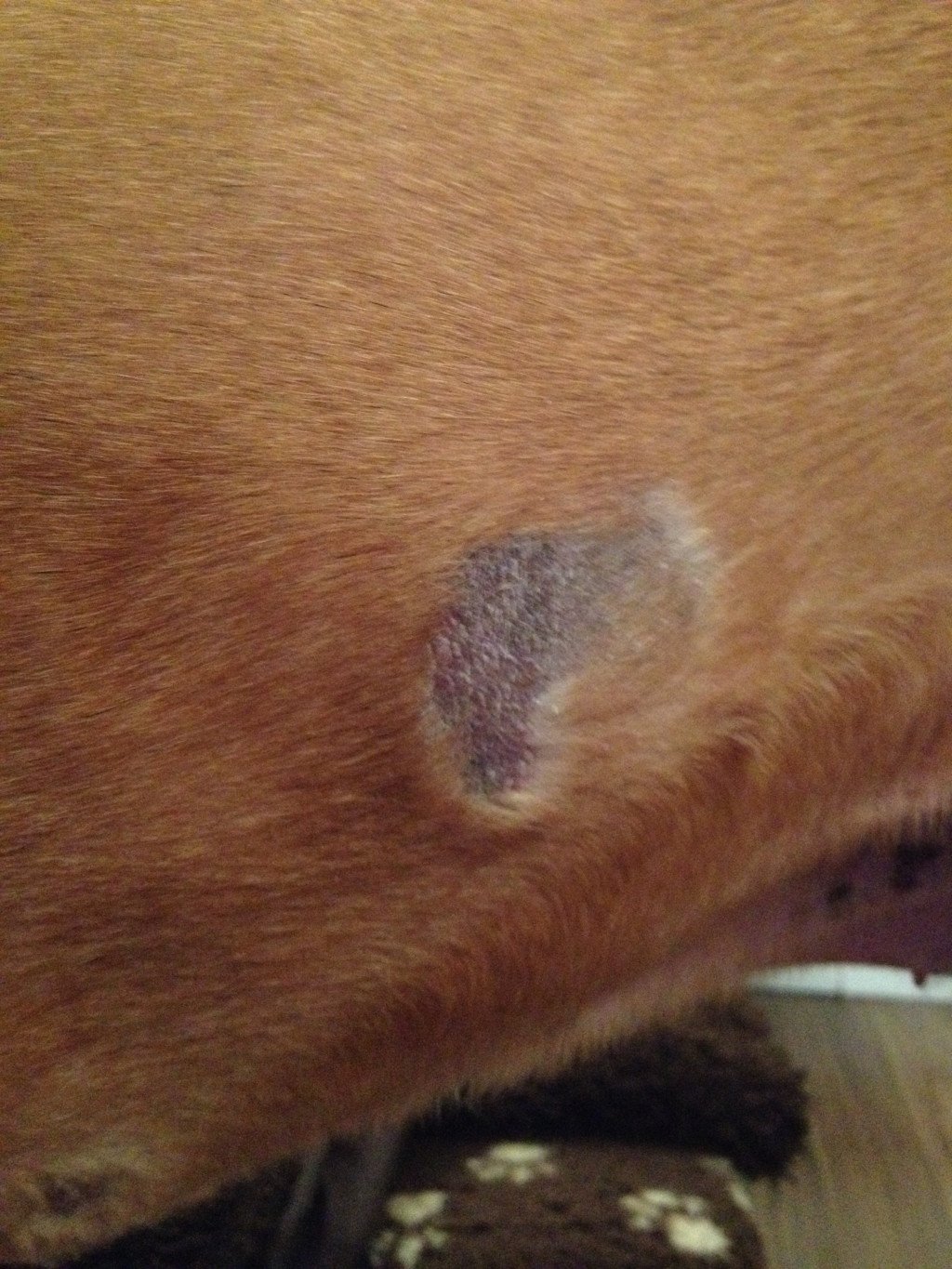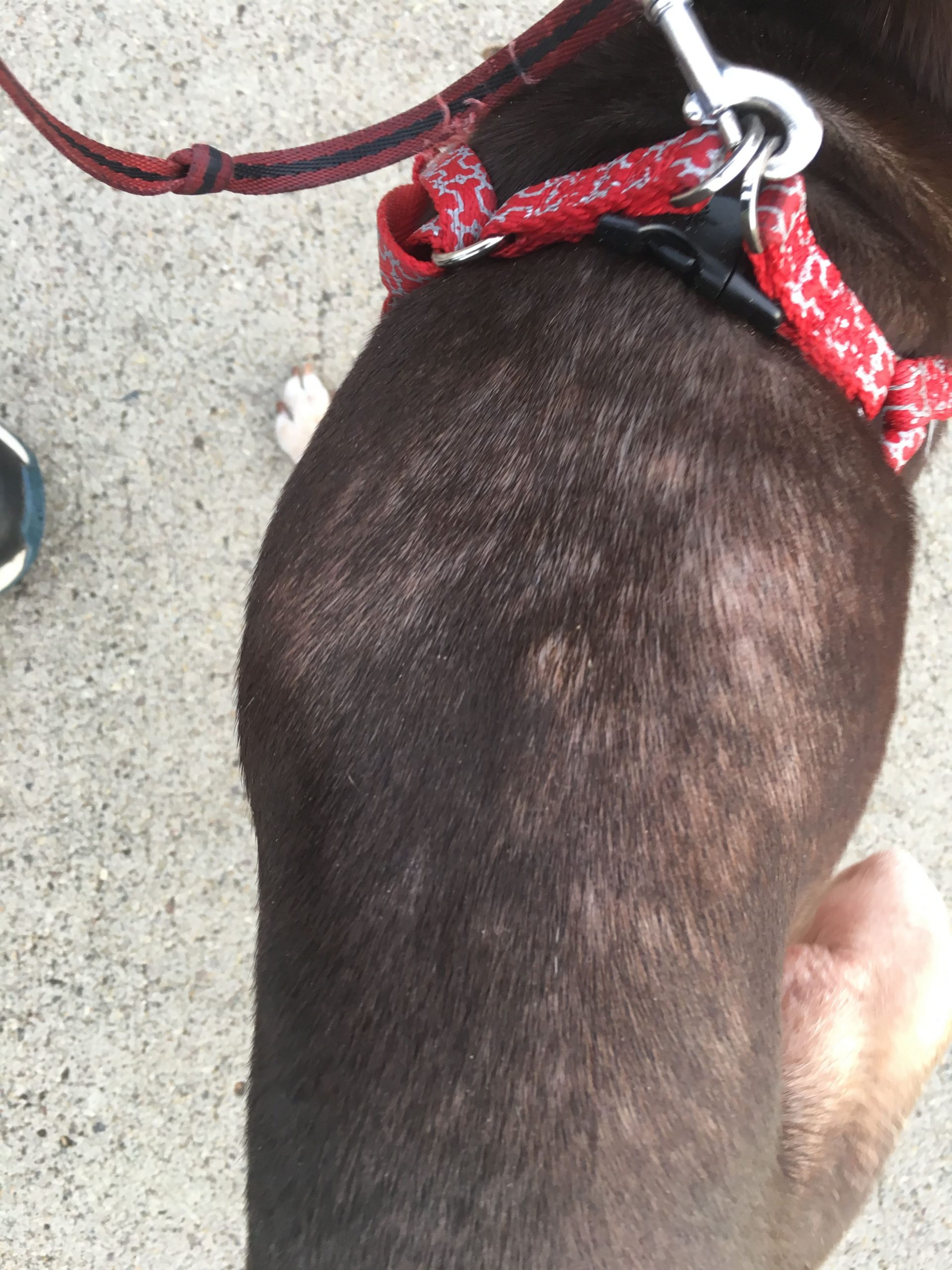What Can I Put On My Dogs Dry Flaky Skin
Dogs with Dry Skin: Treatment
Purchase A Humidifier For Your Home
This can be a big help for some inside dogs. Low humidity in a house with central heating or air conditioning aggravates dry skin, which is why this problem is relatively uncommon in outdoor dogs. It is not the best nor the only solution, however, and if your dog is still eating commercially produced dry dog food that has been sitting on a shelf, he will be lacking the nutrients he needs for healthy skin. The best way to tell if you need a humidifier is to look at your own skin. If it is dry, especially if you have noticed it itching, then a humidifier is a good option.
Grooming Is Extremely Important
It can be the little things that cause the problem and the little things can be quickly corrected. Dirt and the oil which builds up in your dogs coat can cause some of the skin problems you are worried about. Grooming includes brushing the coat carefully on a routine basis. That is going to allow the natural oils that are part of the dogs body to be evenly distributed. It means that there is no oil buildup in one area that can cause skin problems to develop. Matting is something that can lead directly to dry skin. The grooming sees to it that the matting is removed and that skin is better able to receive the air that it needs.
Recommended Reading: How Do I Thicken My Thinning Hair
Home Remedies To Help With Hair Loss In Dogs
Just like humans, dogs suffer from hair loss, too!
Although most dogs shed their hair, some breeds tend to do it more often and to a greater degree than others. It is especially common for dogs to blow coat to adjust and adapt to seasonal changes. They usually shed more during the summer than the winter months.
This happens due to the seasonal shedding rotations related to variations in light. However, if your dog is shedding more than normal, especially to the point of developing bald patches on the body, theres a good chance your pet pup is suffering from canine alopecia, which warrants proper attention and care.
Seborrhea In Dogs Faqs

How can I treat my dog’s seborrhea at home?
After seeing a vet to confirm your dogs diagnosis, you can treat seborrhea at home by using an anti-seborrheic shampoo containing coal tar and salicylic acid.
Home treatment also includes bathing your dog every 2 to 7 days on a schedule set by your vet. You will also clean your dogs ears with a medicated ear cleaner every 2 to 3 days.
If an underlying health issue is causing your dogs seborrhea, youll need to follow all treatment protocols for that illness to ensure the seborrhea is properly managed.
If your dogs seborrhea is not improving, however, take them to the veterinarian. They might have developed bacterial and yeast infections of the skin and ears that require a prescription medication.
Does seborrhea in dogs cause hair loss?
Yes, it can cause hair loss.
What does seborrhea smell like on dogs?
Seborrhea can smell very badly, like grease, corn chips, or a strong doggy scent.
Is seborrhea in dogs contagious?
No, seborrhea is not contagious to other dogs or humans.
Help us make PetMD better
Was this article helpful?
What did you find helpful?
- This article had helpful info and advice that I trust.
- Article was somewhat helpful, but could be improved.
What was not helpful?
- Article wasn’t very helpful and needs improvement.
Say more…
Don’t Miss: How To Stop Hair Thinning
How Can I Treat My Dog’s Hair Loss Naturally
One of the most common treatments for losing hair in dogs is medicated shampoos, but some natural remedies can also work.
Apple cider vinegar can be helpful, but you should always dilute it.
Other potential options include aloe vera, vitamin E, and coconut oil. Ideally, you will consult your dog’s vet before treating any skin conditions.
What Is Scaly Skin
Dogs of all ages and breeds are susceptible to scaly skin however the problem may be more likely to occur in very young or old dogs, dogs who are immunocompromised or living in suboptimal environments. Your dog will likely be irritated by scaly skin and your first clue of an issue may be your dog scratching, chewing and licking himself more than normal.
Exfoliative dermatoses is a group of skin disorders which manifest in scaling skin or dandruff. Root causes, severity and treatment methods vary, but exfoliative dermatoses is typically the result of excessive shedding, excessive accumulation of skin cells, or loss of skin cells ability to bond together.
Vet bills can sneak up on you.
Plan ahead. Get the pawfect insurance plan for your pup.
From 45 quotes ranging from $200 – $1,000
Average Cost
Protect yourself and your pet. Compare top pet insurance plans.
Also Check: Will Eliquis Cause Hair Loss
Symptoms Of Hair Loss In Dogs
Hair loss in canines is usually accompanied by other symptoms, such as:
- Itching
- Dry, scaly skin around the bald patch
- Red and irritated skin around the hair loss area
- Foul-smelling skin due to a yeast infection
- Constant licking and biting of the irritated skin patch to ease the discomfort
- Black-, grey-, or off-colored skin on the bald patch
- Moist discharge or bleeding from and around the irritated skin
- General thinning of hair across the dogs body
- Crusty, thickened, and inflamed skin on the affected area
- In some cases, development of pustules or lesions on the affected area
- In severe cases, development of blisters or open, oozing sores
Are The Dry Skin Supplements Going To Make My Dog Sick
If you are in a hurry and give too many supplements to your dog, there can be problems. Excessive fatty acids can cause loose stools, and too much coconut oil or olive oil will make a dog fat.
Try switching your dog’s diet first. Bathe him in colloidal oatmeal. As long as everything is okay, use coconut oil on his skin and follow directions. If you do not notice any problems with this regimen, you can add fish oil to his diet once a day, use apple cider vinegar the next day, and then vitamin E the following day. If your dog has problems with any of the supplements, you will know which one is causing the problem and can stop administering it immediately.
A Pug taking a monthly oatmeal bath.
Recommended Reading: How To Grow Hair After Hair Loss
What Is The Best Option For Dogs With Dry Skin
The best overall option for your dogs coat and skin may be a mixture of these remedies, although we highly recommend CBD dog shampoo. While other remedies can target some of your furry friends symptoms, CBD shampoo also provides relief to the entire body. You can clean your dogs skin on the outside, nourish it, and provide a soothing sensation with CBD suds.
Fortunately, you dont just have to try a single treatment method. Combine different techniques, use essential oils or CBD with coconut oil, and let us know your most effective methods. With cleansing properties, moisturizing effects, and the benefits of CBD oil, youll quickly see why this is product is one of the best for dry skin!
Recovery Of Scaly Skin In Dogs
In the majority of cases, carefully following the veterinarians instructions will lead to healthy skin, coat, and a happy dog. It is important to follow through with all diet, parasite control, and hygiene recommendations. The veterinarian may recommend a natural, hypoallergenic shampoo for regular use. Frequency of bathing depends upon your dogs breed and specific skin and coat, so be sure to keep to the recommended schedule. Additionally, regular brushing is important for hygiene but frequency will also depend upon your dogs breed, skin and coat. In order to prevent further issues with scaly skin, keep your dogs environment clean.
*Wag! may collect a share of sales or other compensation from the links on this page. Items are sold by the retailer, not Wag!.
Scaly Skin Average Cost
You May Like: What Causes Hair Loss On Keto
Treating Dry Skin In Dogs
Your vet will be able to identify or test for the common causes of dry skin in dogs and provide appropriate treatment options. Treatments could include injectable, topical, and/or oral medications to ease discomfort. Feeding trials with prescription diets may be pursued if food allergies are suspected. Referral to a veterinary dermatologist for a skin workup should be considered if warranted.
How To Get Rid Of Dog Dandruff

Do dogs get dandruff? Yes, they can. You may have noticed the not-so-welcome flakes sitting atop your precious pup’s fur during your last grooming session.1 Just like people, dogs can develop dandruffalthough rather than on their heads, pet dandruff tends to show up on a dog’s back, face and flanks.
Are white flakes hanging around your home and dog a nuisance? Absolutely! But there’s no need for alarm or panic when dealing with pet dandruff. In most cases, dandruff is very manageable. With a bit of determination and patience, you can help your dog’s coat regain its healthy look and feel.
Dandruff is fairly common in pets, but it’s important to discover its origins so you can accurately assess and rid your pet of annoying flakes.
Before we dive into the various ways you can rid your pet of the flaky nuisance, let’s first discuss the leading causes and symptoms associated with pet dandruff.
Don’t Miss: Will Radiation Cause Hair Loss
My Dog Doesnt Have Fleas Why Do I Need Flea Control
Fleas are classically known for causing skin irritation and itching. Some dogs are extremely sensitive to a single flea, such as with flea allergies. In these pets, the saliva from a flea will send them into an itchy rage for weeks. These dogs may have dry skin with or without crusts, and/or thinned hair or loss of hair near the tail base. Aggressive flea biters may even quickly eat a flea once bitten. Consequently, owners may never see evidence of a flea infestation in their own home. All pets in the household should be flea treated.
What Diseases Cause Dogs To Lose Hair
From bald patches to full hair loss, several diseases and other causes can lead to your dog losing hair.
Food and environmental allergies are prevalent causes. Infections or infestations of mites, ticks, or fleas are another potential cause.
The hair loss can also be from pressure sores, genetics, Cushing’s disease, skin cancer, bacterial or fungal infections, flea bites, skin lesions, mange mites, or dust mites.
Your vet will determine the cause of your dog’s hair loss. This will help ensure it is treated properly.
Read Also: How To Stop Hair Thinning From Stress
Recovery And Management Of Seborrhea In Dogs
Recovery and management depend on the cause of the seborrhea. If a primary cause of seborrhea can be found, managing the primary disease is key.
It can take several weeks for the signs of seborrhea to resolve, and the primary disease-causing seborrhea will need to be managed for life.
It is also important to understand that once seborrhea is present, abnormal keratin placement in the skin will continue to occur.
Using anti-seborrheic shampoos and ear cleaners on a schedule recommended by your vet for the rest of your dogs life helps to decrease keratin buildup and prevent infections.
If your dog gets itchier or develops skin lesions, schedule an appointment with your veterinarian as soon as possible.
Management of seborrhea often requires a lifelong routine of bathing and ear cleaning, but with consistent treatment, your dog can enjoy a good quality of life.
Black Scabs On Dogs Neck
Black scabs o the dogs neck can be very irritating to the dog and embarrassing to the owner. Typically, when your dog is seen with scabs, people automatically believe that you do not take good care of your dog.
People do not know that black scabs are a skin condition that is caused by different factors including infections, poor nutrition, too much grooming, allergies, and parasites.
However, when you notice the scabs on the dogs neck ensure that you call or take the dog to the vet for medication.
Recommended Reading: How To Fix Stress Hair Loss
When To See A Vet About Your Dog’s Bald Spots Or Lost Hair
If your dog is losing more fur than seasonal shedding, then consider consulting your vet. You can give it a day or two to see if it improves if you want.
However, you should definitely make a vet appointment if other symptoms, such as itching, a bad odor, changes in behavior, or irritated or infected skin.
You also want to consult the vet if any other people or pets in the house have skin lesions.
Any situation with itching, bad odor, irritated skin will typically require veterinary medicine.
What Causes Dog Hair Loss
Hair loss in dogs may be caused by many reasons, including allergies, infections, and parasites.
Depending on the underlying cause, canine alopecia may be accompanied by infection and irritation, along with possible reddening of the skin and the affected area.
There are five most common causes of dog hair loss that pet owners will encounter, along with treatments and preventative measures that can assist in caring for your pooch.
Recommended Reading: How To Prevent Hair Loss At A Young Age
Dog Skin Problems Based On Health Of Dog Coat Or Hair
Hair lossand thinning can indicate a range of dog skin problems. For example,symmetrical hair loss on the body, accompanied by bumps, blackheads,flaking or other mild skin irritation can indicate Cushing’sDisease orhypothyroidism.Some dog hair loss is breed specific such as such asthinning hair on the ears or dog baldness associated with Dachshundsand some short haired breeds. Patchy hair loss is a sign of animmune-mediated canine skin disease. Alopecia areata refers to dogsthat lose hair of only one color.
Dog hair loss requires a trip to the veterinarian when a dog issuffering from itch, smells bed, or if there are signs of irritatedskin or infected skin. Also if your dog appears ill alongwithhair loss, this could indicate a condition such as a bacterial skininfection, mange or other parasiticdog skin disease.
Dog Skin Conditions Based on Hair and Coat Condition |
|
|---|---|
| Dog Hair or Coat Condition | Possible Cause of Dog Skin Problems |
| Dull coat hair |
| Cutaneous Yeast |
Dog Dry Skin: Treatment

A clinical exam is needed to identify the cause of a dogs skin problems. If your dog is showing signs of a skin disorder, have a veterinarian check him out and provide next steps to a treatment plan.
A professional diagnosis of whats causing the irritation helps to isolate specific allergens that need to be avoided or managed, as well ensure the appropriate treatment that could include topical or oral medications to help ease any discomfort.
Also Check: Does Trulicity Cause Hair Loss